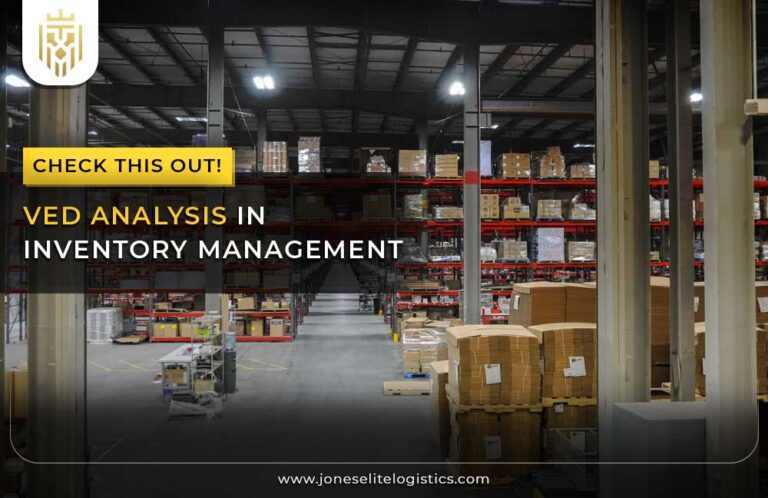Getting to Know Supply Chain Management
The current world is going through a technological revolution, where each aspect of the world can be replicated by a bunch of humans. Even tasks that generally require more manpower are witnessing a surge of AI and robotics attempts and occasionally succeed in replicating these tasks with little to no difficulty. The delivery of goods to various places has also evolved since the Industrial Revolution, and currently, anyone can order anything from anywhere, thanks to major technological developments in Supply Chain Management.
What’s Supply Chain Management All About?
Supply chain management, or SCM, involves overseeing the movement of goods and services from production to customer delivery, either directly or through retail channels. It encompasses managing manufacturing, sourcing, logistics, and distribution processes to guarantee products reach their destination on time and at the expected cost. The main goal is to supervise the entire product lifecycle, from creation to customer satisfaction.

Nature of Supply Chain Management
The very initial phase of Supply Chain Management goes back to ancient times, where kingdoms were there to perform the exchange and trade of goods and other things with each other and count manually the number of barrels shipped and the number of men remaining. Therefore, as time goes by, it has converted into being more exuberant and complex by nature with the participation of a multilayered system of linked activities, stakeholders, and processes.
A major facet of Supply Chain Management is the dynamic process of the organization’s change with time, based on market conditions, technological improvements, and consumer behaviour. This does, however, affect the number of essential building blocks of the supply chain, which is elucidated below.
The Building Blocks of Supply Chain:
A Supply Chain Management needs to be set up in a way where each task co-ordinates with each other to ensure a smooth demand supply to its customers. The following lines shall explain each of these procedures to understand why they are set up in that order:
From Procurement to Distribution: Exploring Key Elements
- Procurement is simply the act of purchasing raw materials, subcomponents, and suppliers‘ services that are needed until the creation of finished goods.
- Manufacturing embraces the consumption of these unfinished materials to produce finished products through the procedures of manufacturing or assembly.
- Inventory control involves the wise management of inventory as a means of achieving an efficient flow of goods to maintain an optimum level of inventory, ensuring the market demand is being met without incurring storage or handling costs.
- Logistics and transportation can be described as a process that includes the management of the move, and transportation of the materials from suppliers to production facilities and production facilities to distribution centers and the final customers.
- Distribution assures that products are made available to diverse channels such as warehouses, retailers, and e-commerce platforms for easy access to the end customers.

How Each Piece Fits Together to Keep Things Running Smoothly
Supply Chain Management stands akin to a machine: the ‘switch on’ button is pressed, which generates the right amount of energy to activate its inner mechanisms. Once activated, the machine executes its tasks according to the settings fixed by the user. Sometimes, the machine can stop functioning due to a simple error in its mechanism or parts, resulting in undesirable consequences for the user.
Inside Supply Chain Management: What It Involves:
As stated previously, each function is interlinked and one misstep causes damage to other sectors. Just as a machine requires time-to-time repairs and maintenance check-ups, the supply chain management also needs to go through regular check-ups and the people involved need to perform these tasks to ensure the chain is never broken.
-
Planning Ahead and Predicting Future Needs:
This is the most important factor that ensures the success of supply chain management. An ideal way to maximize it is to combine qualitative and quantitative approaches, which involve researching historical data and past trends while looking into expert opinions and market research.
-
Finding the Right Suppliers and Getting the Best Deals
The right supplier comes with benefits such as offering top-quality goods, and if a partnership is formed, the customer can benefit by only getting the best deals from the supplier. To ensure this happens, the customer needs to research available suppliers that can meet their demands and work while maintaining quality standards, financial stability, and other essential criteria.
-
Making Things, Moving Things, and Keeping Track of It All
Current Technological Advancements have made it far easier to track the transportation of goods, and companies have set up their tracking systems to ensure on-time delivery with zero hassles.
-
Making Sure Products Get Where They Need to Be, When They Need to Be There
Like tracking the transportation of products, one must track the delivery of products to ensure it has been picked up from and dropped to the right place. A mishap in delivery results in chaos for the recipient, the delivery company, and everyone else involved.
-
Keeping an Eye on Stock Levels and Making Sure There’s Enough
Stock levels can sometimes decrease suddenly due to unusually high demands, which can result in other customers looking elsewhere. Keeping an eye on stock level and ensuring there is enough help with supplying each customer with their demands whenever needed.

Exploring the Impact of Supply Chain Management
The world has witnessed catastrophes, which previously would have been harder to tackle. However, the proper implementation of supply chain management has ensured smoother delivery of aid kits, food supplies, and other helpful goods to those in need. In addition, it also spreads its impact in the following sections:
-
How It Helps Businesses Keep Up in a Globalised World
Information is far more easily available and accessible, and businesses are keenly utilizing these facilities to stay in touch with current trends in supply chain management.
-
Technology to Make Operations Run Even Smoother
The globalized world also allows businesses to explore previously unknown technology worldwide that can be implemented on a wider scale to upgrade their supply chain management.
-
Doing Our Part to Make Sure Things Are Done Sustainably and Responsibly
Implementing new methodologies also involves minimizing wastage that potentially harms our ecosystem. This can involve recycling rejected pieces, finding alternate ways to reuse them, and more, which contributes towards a more sustainable supply chain.
-
Being Ready for Anything: Managing Risks and Navigating Challenges
Planning not only involves setting up a management system, it also involves looking for potential threats and implementing solutions to negate their impact. In addition, there needs to be multiple solutions for one problem, if one fails, another can be implemented immediately.

The Importance of Getting Supply Chain Management Right
If gotten correct, the ideal supply chain management reaps several benefits that boost the performance of a company and generate more profit. Some of those benefits include:
-
Saving Money, Saving Time, and Keeping Customers Happy
The ideal chain supply management system is maintained to ensure each task is performed well every time to plan. This saves money and time, which accumulates in the proper delivery of goods, keeping customers happy.
-
Staying Ahead of the Competition and Staying Flexible
Planning and on-time maintenance allow the implementation of new measures that can help to stay ahead and flexible with adjustments whenever necessary.
-
Making Sure Everything Runs Like Clockwork, Even When Things Get Tough
The world is not perfect, and so is the chain supply management. Even with top-notch overseeing, unpredictable predicaments occur that disrupt the management’s flow. The people involved need to be ready with alternatives.

Facing Challenges and Embracing the Future
Staying behind in the past hinders one’s vision of their ideal chain supply management, as their ideas tend to be unsuitable with the current world’s progress. The below-mentioned suggestions can help one progress with a new flow of ideas:
-
Dealing with Unexpected Hiccups and Keeping Things Moving
Unexpected hiccups do occur when least expected, which halts the supply chain management’s progress. However, there is a guarantee that someone else would have experienced a similar problem, and looking at the solution they implemented can help solve the problem faster.
-
Doing Our Bit for the Planet and Preparing for What’s Next
Companies are implementing procedures such as ethical sourcing, waste reduction, life cycle assessment, and sustainable transportation. Other ways to maintain sustainability include investing in renewables, using recycled materials, and implementing renewable energy sources.
-
Making the Most of New Technologies and Innovations
New inventions and technologies are created in ways that do not negatively impact the planet. Leveraging them allows faster production with minimal to zero wastage.
-
Being Ready to Adapt and Evolve Alongside the Changing Landscape
Adapting to the ever-changing landscape has benefited companies worldwide. The recent trend of official Instagram accounts of noted companies engaging in social media banter has successfully retained their popularity, which translates to more potential customers.
FAQs
-
What is the scope of the supply chain in India?
India’s scope of logistics and supply chain management system has its ups and downs. Long and infrastructural constraints, high cost of raw materials, and lack of adequate tech support have been some of the problems, especially during the initial days of the COVID-19 lockdown. However, the growing influx of capital and the government’s increased interest in improving the nature of supply chain management has led to an increase in awareness among supply chain leaders, who have rigorously implemented as many solutions to eventually be a leader in supply chain management.
-
What is the future of the supply chain in India?
Currently, the Indian supply chain and logistics sector stands as one of the largest globally, with a value of $ 3.4 billion and employment of over 22 million people. The pandemic disruptions barely made a dent, as this sector is expected to grow at a CAGR of 11.1% by 2030







